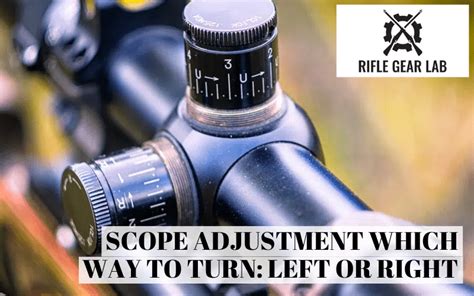Transform Your Shooting: Proper Scope Adjustment
Accurate shooting depends heavily on proper scope adjustment. Whether you're a seasoned hunter, competitive shooter, or just starting out, understanding how to dial in your scope is crucial for consistent, precise shots. This guide will walk you through the process, covering everything from basic adjustments to more advanced techniques, ensuring you transform your shooting accuracy.
Understanding Scope Adjustments
Before diving into the specifics, let's grasp the fundamentals. Most rifle scopes utilize turrets – those knobs on top and/or the side – to adjust the point of impact (POI). These turrets are typically graduated in either MOA (Minute of Angle) or MIL (Milliradian), both units of angular measurement.
-
MOA (Minute of Angle): One MOA equals approximately one inch at 100 yards. A 1 MOA adjustment will move your bullet's impact point one inch at 100 yards, two inches at 200 yards, and so on.
-
MIL (Milliradian): One MIL is roughly 3.6 inches at 100 yards. Similar to MOA, a 1 MIL adjustment moves the impact point by one MIL at the given distance.
How to Zero Your Scope: A Step-by-Step Guide
Zeroing your scope means adjusting it so that your point of aim matches your point of impact at a specific distance. Here's how to do it effectively:
-
Safe Setup: Begin at a safe shooting range with appropriate backstops. Ensure your firearm is unloaded and handled safely.
-
Choose Your Zeroing Distance: 100 yards is a popular choice for most rifles, providing a good balance between practicality and accuracy assessment. Longer distances might be necessary for certain applications.
-
Initial Sighting: Fire a few shots at your target. Note where your shots are impacting relative to your aim point.
-
Adjust Your Turrets: Based on where your shots landed, adjust your scope's windage (left/right) and elevation (up/down) turrets to bring your POI closer to the center of your target. Remember to make small adjustments at a time, especially with high-powered rifles.
-
Iterative Process: After each adjustment, fire a few more shots and observe the impact. Continue adjusting until your shots consistently group tightly around your aim point.
-
Record Your Settings: Once zeroed, record the settings of your turrets for future reference. This is crucial if you ever need to re-zero your scope or need to quickly return to your zero after making adjustments for different conditions.
What if my shots are consistently off to the left or right?
This commonly indicates a problem with windage adjustment. Carefully adjust your windage turret in small increments to correct the horizontal deviation. Remember to consistently check and refine your adjustments after each small correction. Ensure your shooting stance and grip are consistent to minimize human error contributing to inconsistencies.
How do I compensate for different distances?
Beyond zeroing at a specific distance, accurate long-range shooting requires understanding how to compensate for bullet drop and wind drift at different ranges. This usually involves using ballistic calculators or rangefinders, and understanding your ammunition's ballistics. Advanced techniques include dialing in your scope turrets for specific distances or using holdovers (aiming above or below the target).
What are the different types of scope adjustments?
Most scopes offer either ¼ MOA or ⅛ MOA clicks per adjustment. The smaller increments offer finer control but require more adjustments to make significant corrections. MIL-based scopes have similar systems, but with adjustments in milliradians.
How often should I check and re-zero my scope?
Regular checks are essential, particularly after significant changes in environmental conditions (temperature, humidity), rough handling, or after cleaning your firearm. Re-zeroing might be necessary if your accuracy significantly degrades.
Conclusion
Mastering scope adjustment is a journey that requires practice and patience. By understanding the principles outlined above, consistently applying safe practices, and diligently refining your technique, you can significantly improve your shooting accuracy and transform your overall shooting experience. Remember to consult your scope's manual for specific instructions and recommendations. Safe and accurate shooting practices should always be prioritized.

